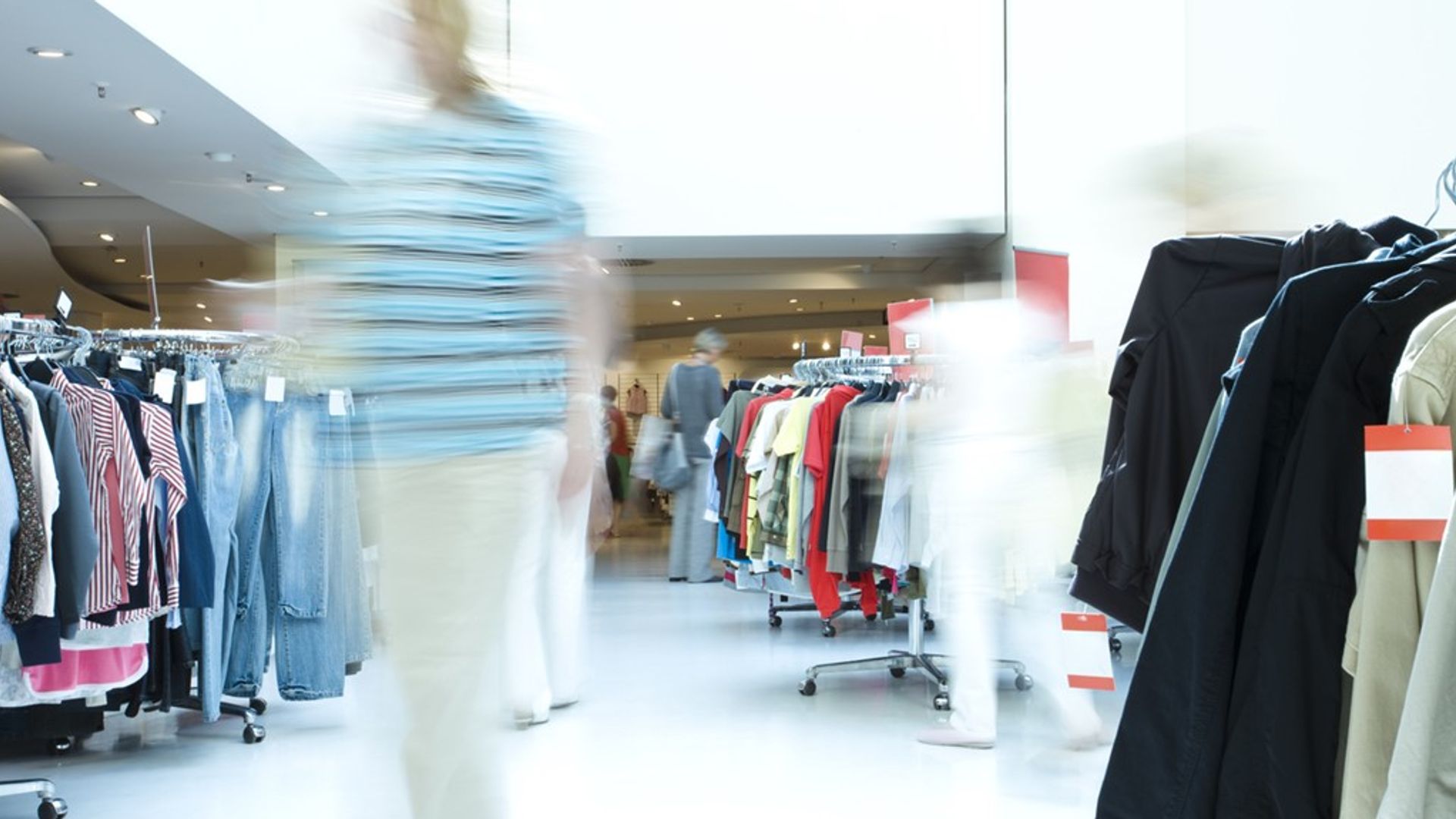We’ve all been there. You have a bad day and you need a little pick-me-up – so you head straight to your favourite website to buy something new.
That hit of dopamine you get when buying something is what many businesses rely on – and no one seems to understand it better than fast fashion brands.
But not only is this hurting our wallets, it’s also harming the planet.
In the final part of our psychology of shopping series by the Money blog team, we spoke to fair fashion campaigner Venetia La Manna (@venetialamanna) – who advocates for a more sustainable approach to clothing – about the little tricks fast fashion companies use to get people to spend, spend, spend…
Always in a rush – and slippery floors
Many of the techniques fashion companies use involve ensuring people feel rushed to make purchasing decisions.
Ms La Manna says websites and social media pages are set up to make them look “very immediate” so we “always feel like we have to buy something before it’s gone” – meaning you’re not able to sit with a purchase and think about whether you need it.
Urgent health warning after E.coli outbreak linked to ‘nationally distributed food item’
D-Day latest: Zelenskyy arrives in Normandy to raucous applause – after Biden’s swipe at Putin
Dr Michael Mosley: TV doctor goes missing on Greek island Symi
Fast fashion companies also keep an eye on trends and push out products as soon as possible to make sure people are “buying very, very quickly without necessarily much thought”.
And the sense of urgency is not just limited to online stores.
Ms La Manna says physical clothes shops will make sure their floors are slippery “so you can almost whizz around with more ease”.
Often they will also have loud music to encourage “shopping in a frenzy”.
They know what you want
Fashion sites use “highly advanced” search engine optimisation to find out what kind of products their customers are searching for and push these items to them, Ms La Manna says.
They also work with popular online influencers and get them to post affiliate links – meaning if you want to look like your favourite influencer or celebrity, you can buy what they’re wearing “in just a few clicks”.
Read more:
Inflation in UK shops now back at ‘normal levels’
Dr Martens profits plummet 43%
Fashion giant Shein eyes London stock market
Ultimately, they are making things “very easy to buy” and often have shopfronts on popular social media sites like Instagram and TikTok.
Plus, there is the issue of affordability.
Many are driving their prices down so low that “it makes you feel like ‘hey, why not’ when it’s cheaper than a sandwich or a coffee”, Ms La Manna says.
Heaters at the entrance
Physical shops use other techniques to entice customers to buy.
For example, Ms La Manna says the heat changes when you go into the shop so you’re “invited into a warmer environment”.
Shops are also set out in a specific way, often placing cheaper items near checkouts and easy outfit formulas near each other.
The dopamine hit
With lots going on in the world, we may be more susceptible to falling into the spending trap than ever.
“The world is really heavy and people are struggling. Buying fast fashion or buying stuff gives us a momentary hit of dopamine, and of course we need that – when we’re suffering, when we’re feeling low, [shopping] is an easy one to reach for,” Ms La Manna says.
Despite practising “slow fashion” – trying to buy less and more consciously – for years, Ms La Manna says she still has moments where she feels that buying something would make her feel better.
But she says it’s possible to get much-needed dopamine hits from elsewhere – including by being active in your community, or by taking your time to find something you really, really want (ideally secondhand!).
Why does it matter?
Aside from being bad for your wallet, Ms La Manna says overconsumption is also bad for the planet and for the garment workers making your clothes.
She says many big fashion companies don’t pay their garment workers a fair living wage – with many unable to provide food for their families, living in poverty and lacking paid time off.
The overproduction of clothing is also harming communities in the global south who are left to deal with vast piles of unwanted items, she says.
The majority of clothes taken to charity shops or recycling bins don’t end up being resold – instead they are shipped off largely to places in the global south, where communities are “left to deal with a problem that’s not theirs”.
For more information on slow fashion, Ms La Manna suggests checking out The Or Foundation, Remake and the Clean Clothes Campaign.





















